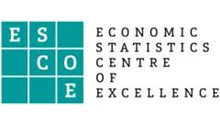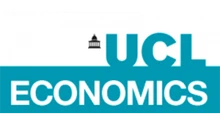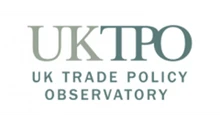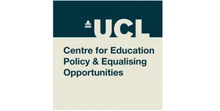Uganda’s smallholder farmers continue to struggle with low crop yields. The government has tried public subsidies for key inputs in order to boost productivity. But the success of these policies relies on programme design and implementation, as well as the availability of complementary services.
The farming sector in Uganda is a laggard. It has one of the lowest rates of modern agricultural input use in Africa, with fertiliser application of 2-3kg per hectare, far below the continent’s average of 9kg (Nyirongo and Khataza, 2025). Such low input use contributes to Uganda’s modest crop yields. Without modern techniques, the country’s farms risk being left in the past.
To boost the productivity of smallholder farmers, the Ugandan government and international donors have piloted input subsidy programmes. One example is Operation Wealth Creation (OWC), which aims to ‘mobilize masses to engage in commercial agriculture to boost household income’. There are also various electronic voucher (e-voucher) schemes under the Agriculture Cluster Development Project (ACDP). These programmes supply farmers with discounted fertiliser as well as better seeds.
The critical question is: do these agricultural subsidies increase smallholders’ productivity? Evidence from Uganda suggests that subsidies can raise farm output in the short run, but the results are mixed and they hinge on programme design, timely implementation and complementary services.
Which government input subsidy programmes have supported Ugandan farmers?
Over the past few decades, the Ugandan government has introduced a series of initiatives to boost smallholder productivity by subsidising farm inputs. In the 2000s, the National Agricultural Advisory Services (NAADS) programme began providing free or discounted inputs like seedlings, fertiliser and livestock, alongside advisory services (Ochen et al, 2022; Kyambadde, 2022; Tabaro and Katusiimeh, 2018).
In 2014, the distribution of farm inputs was handed over to the army under the OWC framework. The idea was to scale up the delivery of seeds and planting materials nationwide, but there were concerns about timely distribution, quality control and a lack of complementary training for farmers. Indeed, after 12 years, the programme only reached 26% of farmers and was criticised for inefficiencies and political interference.
In 2017, Uganda – with support from the World Bank under the ACDP – shifted to a ‘smart subsidy’ approach that uses e-vouchers to access agricultural inputs (Nalunga and Lubega, 2024). This provides farmers with a time-limited, matching grant to buy inputs like hybrid seeds, fertiliser, pesticides and on-farm storage.
To participate, farmers must co-fund part of the cost (starting at 33% and increasing each season) and be members of a registered cooperative. The subsidy is delivered through e-vouchers redeemable at local agro-input dealers. This has helped the government to target genuine inputs and bring on board private suppliers.
By 2021, about 425,000 farmers were enrolled in the e-voucher system and 208,000 had redeemed subsidised inputs (MAAIF, Ministry of Agriculture, Animal Industry and Fisheries, 2021). The government covered roughly two-thirds of the input cost, with farmers contributing the rest.
In addition, MAAIF launched programmes like the National Fertiliser Strategy, focusing on bulk procurement and import subsidies to reduce prices for farmers. These efforts reflect a policy shift from giving out free inputs to a system based on co-financing and market-based distribution, making subsidies more sustainable and better targeted at active smallholders.
Have input subsidies raised farmers’ yields?
Evidence from Uganda indicates that input subsidies have significantly improved smallholder productivity. Efforts under the OWC input distribution led to an increase in maize production from 2.6 million tonnes in 2016 to five million tonnes in 2019. But average maize yields per hectare have remained modest, at 1.5-2 tonnes per hectare in farmers’ fields compared with five tonnes at research stations (UBoS, 2020, PFSU, 2022).
Like maize, bean output increased by 53% in 2020. But again, improvements in yields per hectare have been minimal, at 0.6 tonnes for smallholders. This is substantially below the potential of 1.7-3.7 tonnes per hectare for improved crop varieties.
There have been similar trends for coffee, with production increasing from 4.5 million 60kg bags in 2015/16 to almost seven million bags in 2018/19 – a 56% improvement. But yields have remained low, at only 0.5-0.7kg of clean coffee per tree. This figure is below the targets in Uganda’s National Coffee Strategy of 1.05kg per tree.
So, while OWC efforts have increased the total products produced – often by expanding planted areas and/or encouraging the use of improved seeds – yield gaps remain an issue. This means that there continues to be unrealised potential in Uganda’s farms.
Perhaps unsurprisingly, farmers who received subsidised inputs under the ACDP e-voucher programme saw substantial yield gains. Households that participated increased their crop yields by 30% for maize, 27% for rice, 19% for beans and 9% for coffee. Non-project beneficiaries had yields of 1% for maize, 0% for rice and 0% for coffee (MAAIF, 2021).
These improvements are attributed to the use of improved hybrid seeds and fertilisers provided through the subsidy. With the right support, Uganda’s farms can flourish.
What are the unresolved questions and research gaps?
Sustainability
Whether yield gains last in the long run remains an issue. Farmers may revert to low-input practices once subsidies are phased out. Uganda’s e-voucher programme aimed to address this by gradually phasing out the subsidy over three cropping seasons, giving farmers time to adjust. But the long-term effects have not yet been measured.
Cost
Input subsidy programmes can become very expensive for governments if scaled up nationally. Uganda’s ACDP is funded largely by a World Bank loan – a fully government-funded expansion might strain budgets, diverting funds from infrastructure, research and extension.
Soil health
Research shows thatsole reliance on inorganic fertilisers risks soil degradation. As a result, integrated approaches combining organic inputs are recommended. Heavily subsidising one or two staple crops (like maize) could encourage continuous monocropping. While this may boost calories, it could come at a cost to soil health and biodiversity, as well as increased greenhouse gas emissions. Indeed, Uganda’s own strategy recognises the need to pair input support with climate-smart practices.
Monitoring and evaluation
Measuring productivity accurately among multi-crop smallholders is difficult. This leads to under- or overestimation of impacts. Studies using panel data help, but more rigorous trials are needed.
Effective implementation
How subsidy programmes are rolled out determines their real-world outcomes. While the ACDP provided e-vouchers to farmers for purchasing inputs, the subsidies have suffered from late delivery (missing the planting season), low-quality inputs and the mismanagement of funds. Timing and governance are critical: delays can wipe out benefits and generate high costs.
Complementary services
Subsidies alone are not enough if farmers lack complementary services like extension advice on how to use the new inputs effectively. Uganda’s ratio of farmers to extension workers (frontline advisers who provide practical, unbiased education and technical support) is about 2,000:1. This means that many subsidy recipients do not get adequate guidance, limiting productivity improvements. Ensuring that subsidy programmes are integrated with extension support will greatly improve their impact.
External uncertainties
Subsidies are vulnerable to climate shocks, as extreme weather events like droughts or floods can themselves affect yield stability. This calls for the need to plan with risk data and other accompanying services like water with agricultural production in mind.
Conclusion
Evidence from Uganda shows that agricultural input subsidies can improve smallholder productivity, but their success is not guaranteed. While subsidies can significantly raise fertiliser use and crop yields in the short run, key challenges – such as late input delivery and limited complementary services – can dilute the longer-term effectiveness of subsidy programmes.
For subsidies to drive sustained productivity improvements in the agricultural sector, policy-makers must pair them with strong extension services and improved input distribution logistics. Policy-makers should make timing for subsidies non-negotiable (with inputs being delivered before planting), penalise late suppliers and publish delivery calendars for users to verify. There is also a need to ensure quality control at the last mile through registration, auditing of agro-dealers and conducting random test for inputs.
Policy-makers should also target active, organised farmers and co-finance projects with them, as such groups or cooperatives help to reduce delivery cost and strengthen accountability. This will ensure that farmers get the right inputs at the right time.
In terms of the wider food system and Uganda’s economic development, subsidies work best as catalysts, not crutches. The country’s experience shows that input subsidies can lift input use and near-term yields where adoption is constrained by liquidity, risk and thin input markets – but only when delivery is timely, inputs are quality-assured and advice is included in the bundle of support. Indeed, complementary services such as soil testing can help to drive system-level gains.
Policy-makers should also shift the ‘basket’ of input subsidies from monocrops to diverse, climate-smart portfolios. Smart subsidies can tilt choices toward legumes, oilseeds, horticulture, liming, rhizobium inoculants and drought-tolerant plant varieties. Increasing the production of these crops could help to improve soils, nutrition and resilience.
Input subsidies are a double-edged sword: when well implemented, they can improve smallholder farmers’ yields; but without careful design. they can fall short of their goals and harm soil health and local biodiversity. A careful approach is vital.
Where can I find out more?
- Uganda Agriculture Cluster Development Project (ACDP): a 2024 World Bank implementation completion and results report, which evaluates the programme to improve productivity and market output through e-vouchers, irrigation, post-harvest support, market linkages and rural road upgrades.
- Beyond input distribution: requirements for agricultural transformation in Uganda: a 2017 study by Florence Nakazi, Swaibu Mbowa and Paul Lakuma, Economic Policy Research Centre (EPRC).
- Potential productivity and economic outcomes from adopting agricultural technology and extension: a 2019 study by Tonny Odokonyero and Swaibu Mbowa, EPRC.
Who are experts on this question?
- Jane Nalunga, executive director of the Southern and Eastern Africa Trade Information and Negotiations Institute in Uganda (SEATINI).
- Jonathan Lubega, program officer at the Agricultural Trade for Rural Transformation at SEATINI, Uganda.
- Tonny Odokonyero, a graduate student in economics at the University of Pretoria.









































